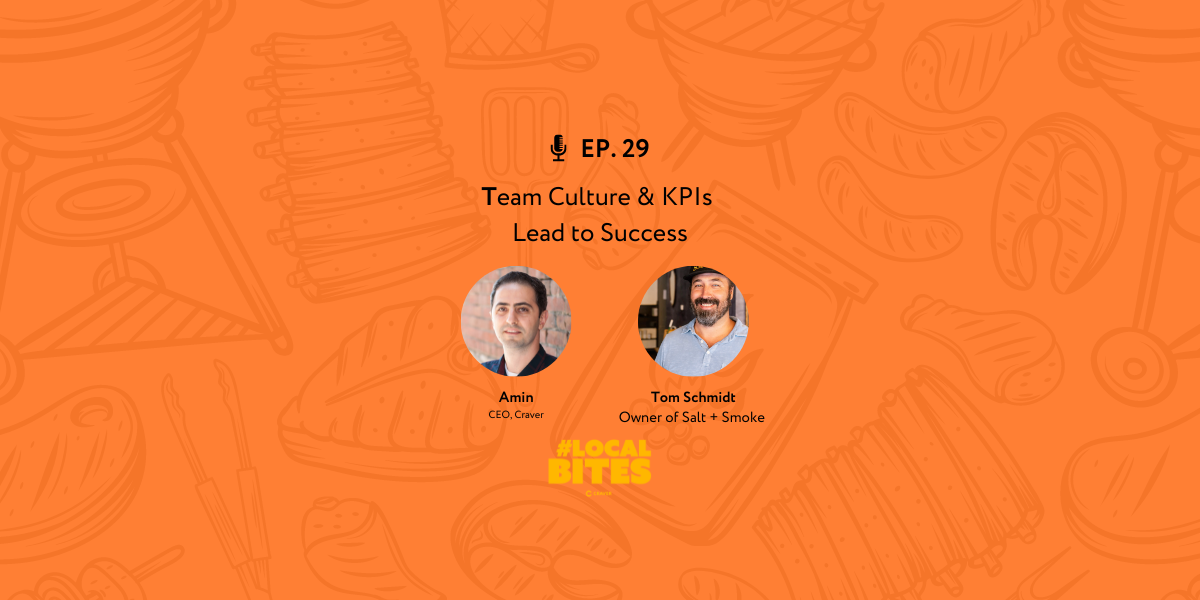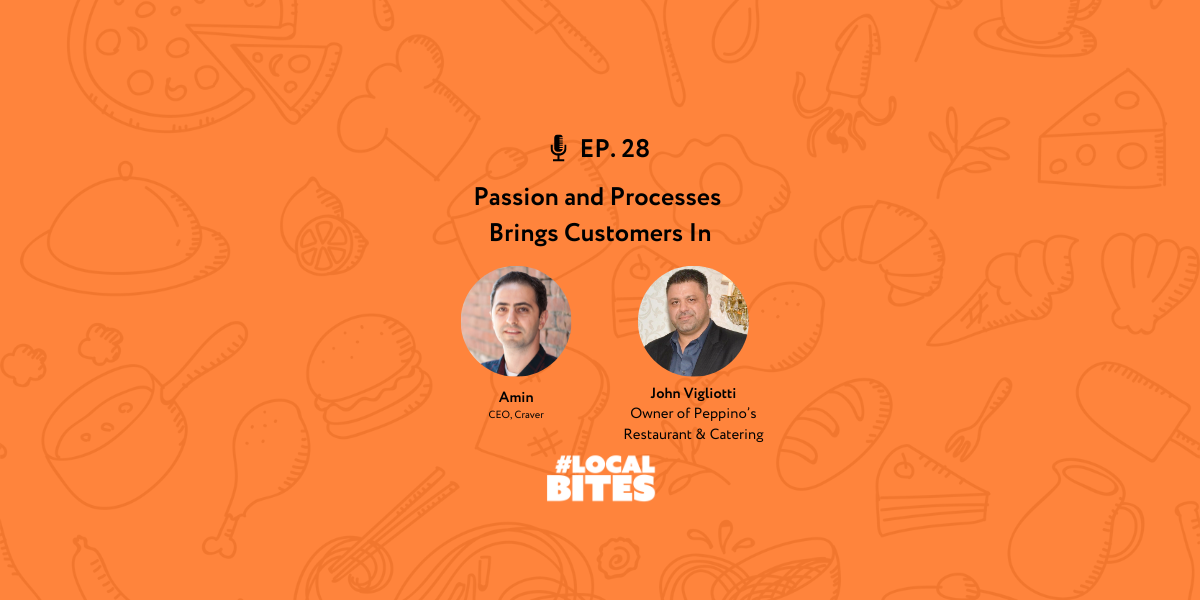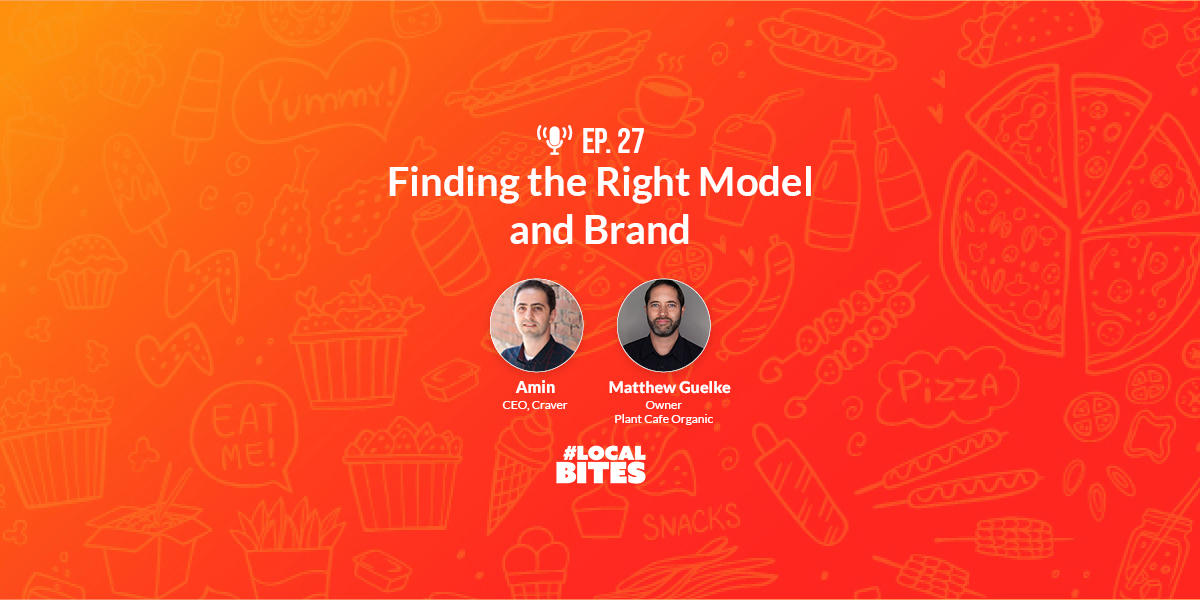The Challenges of Craft Coffee with Sean Brown
In this episode, we talked craft coffee with Sean Brown, owner of Impact Coffee in Decorah, Iowa. Sean runs Impact Coffee along with his father and brother, and shared some of the challenges of a family business. But mostly, Sean told us about how supportive the community of Decorah has been to their coffee shop and roastery.
Listen to the full episode to hear about how Impact Coffee expanded from a 15-seat coffee shop to a local cornerstone:
Or, listen on your preferred podcast service:
In this conversation, we covered:
The History of Impact CoffeeWorking With Family
Craft Coffee
Opening A New Location
Mobile App
Social Media Campaigns
The History of Impact Coffee
Let's start from the beginning. Impact Coffee started in 2014 but what did you do before that?
So I had just graduated college in 2013 from a small liberal arts school—actually in the town that I grew up in—and I didn't really have a plan as to what I wanted to do next. I was just working at a local hardware store.
About a year later my dad and I were brainstorming and trying to kind of decide what my next move would be. He had been in framing in our town for 30 years of custom framing with my mom and he was looking for a change.
We kind of had this opportunity that we couldn't really pass up so next thing you know we're starting a coffee shop and roastery. Eight years later this September where we're still at it.
From art framing to coffee that's a big jump. How did that happen?
Yeah so, he had actually met a couple from Honduras originally that were roasting in a town nearby and became friends with them.
We had started together and then they had another business opportunity they took about six months after we opened. So we had the choice of either calling it quits or taking it on ourselves, and so we transition pretty quickly
We renovated my parents’ garage and turned it into a roastery, and then expanded our coffee from about 15 seats to 45. We underwent quite a few changes in the first year.
That's quite a few changes, definitely. So this is now 2015 you bought out the partner now you're doing roasting yourself. Did you know how to do all of that? Like, how are you getting the information or the skill necessary for doing both the roasting side of things as well as running the coffee shop?
My dad took on the roasting and he still does it actually. I took on the whole management of the cafe side of things. He had learned from his partner originally, and then he took classes with Mill City which is a fairly large roaster or maker of roasters up in Minneapolis. It's not too far and he took some classes from them and then there's a lot of YouTube videos and a lot of trial and error.
He's really done a wonderful job for us. Myself, I was a management major at the college I went to, so [I had] a little bit of background there but really just kind of jumped in feet first and went for it.
Working With Family
So jumping feet first to something like this new career a new business–and a family business in your case–of course, there are a lot of risks. You're risking a lot for the whole family. Tell me about the challenges in the first few years. What were the biggest challenges? What was the toughest moment?
We're in a fairly small town like 8000 with the college here. So trying to enter the market.
There are two other shops that had been here for a couple of years at that point so I think we really focused on the craft side of things. Introducing pour-overs back in 2014 was kind of a big deal.
I mean, nobody really knew what that was. People had some idea. Not quite to what that knowledge is today.
So really introducing the craft side of things, trying to make our own syrups, different things like that, to set ourselves apart. That was really one of the bigger challenges. Just trying to promote ourselves more as the craft side of coffee.
And then obviously working in the family business, that's always challenging.
I lived at home for a little while. It didn't last long. I decided it was probably best to separate some portion of our lives. We worked together and then lived separately so it was a good move.
Tell us a lit bit more about how it was to start and run a family business. What were the highs and lows of that experience for you in the past eight years?
It's really a rewarding feeling to work with your parents. My brother works for us too and so to kind of all be involved in it and create what we've created has been really important.
There are definitely challenges because when you work with your family it's a lot easier to really express how you're feeling. Sometimes that can backfire a little bit, but you also have the ability to just communicate what everybody's strengths are.
Thankfully I have parents who have been in business for 30 years and have tons of experience. I look at them constantly for advice on what we can do to be better.
I’m just very fortunate to have that opportunity. I'll look back at this at some point in my life and just be very grateful that I got to have this opportunity.
Craft Coffee
The interesting part of what you're saying is that you're bringing something new to the city. You're bringing new ways of making coffee, the craft is brand new in the city. What was the process of educating your customers about that?
Yeah, it was quite a bit. Thankfully for me, it was just a lot of hands-on experience for the first three years. Just constantly educating customers as to why our product is better, fresher when we roast ourselves. There's more care involved. It may take a little bit longer but really helped set us apart.
Just repetition and education was kind of the best way to do it. And try to make people feel like… not make them feel silly about it but just really try to… like, it's kind of like the beer industry. You went from drinking lots of light beers to, you know in terms of coffee you went from drinking Folgers to trying and pour-overs. There's a bit of a transition there.
How long did it take from having to explain all of that to almost every single person that comes through the door to having your followers or your regulars who know exactly what they want?
We still see it a lot. Things have definitely changed. It's hard to compete with Starbucks and like the language that they have. You're constantly battling what macchiato is for you know the Starbucks customer as well as those that are more traditional.
But, I think by like 2016 we had seen quite a change. People that travelled at all and tried to find local shops. I think we started to see a bit of a change in 2016-2017 for sure.
If you were to give one piece of advice to someone who wants to start their own craft coffee shop, what would that be?
That's a great question! I think you just need to be prepared for just a lot of hard work and long hours. If you can find a niche that supports small craft coffee and if you're willing to put in the work and the hours, you can definitely make a go of it.
you know having a roaster on site as we do is a huge piece so I think partnering with somebody that you like as a roaster would be you know a good option would be part of my couple of pieces of advice
Opening A New Location
The other thing that you mentioned, you grew your size from that 15-seat cafe to 45. What was the reason for that? Because we see a lot of coffee shops that tend to stay very small, and mostly focus on the transaction of getting a coffee.
We had thought that we were going to be more of a shop that was a grab and go and we were anticipating it being 15 people that could sit in there, and be just a quiet morning kind of thing.
After the first few months, we figured out pretty quickly that it was going to change for us and so we knew we need to get a little bit bigger. The market was there for us. We had done pretty well in the first couple of years, and then in 2019, we expanded again.
We move buildings and took on what used to be a JC Penny's. So it was a large retail shop and that's over five thousand square feet. We knew we had to offer more. We expanded into evening hours cocktails, beer and wine. We just felt like there was a market there that we could capture and kind of hone on that continued craft side of things.
I was reading actually about the JC Penny building that you moved to. It's a pretty important building in Decorah.
Yeah, it was established in the early 1900s or so. It's cool. We have old pictures of the building. I have people come in that used to work there in the 1930s and 1940s, and they stop in and they say “I was in here.” A week doesn't go by where I don't have somebody come in that used to visit Decorah 10,15 years ago and then to JC Penny, it looks so different now.
It was a cornerstone in Decorah, there aren't many department stores and so it was a big space to fill. We felt like we could provide a good community space there.
You mentioned the community. I was reading somewhere that actually, the community was helping you during the renovation phases like bringing you pieces of the history of the building, of the history of Decorah, to sort of add to the new Impact Coffee that was getting established there. What was that like what were the type of things that you were getting from the community?
We just got tons of support. Just going into that space required a lot of renovation.
Help from friends and family, wonderful contractors that we worked with, and working to restore the old tin ceiling. In the building, there used to be a really cool archway into the entrance that was covered up by a really ugly facade in the 1960s or 1970s and so we did quite a bit of work to renovate the exterior of the building to bring it back to the original look.
Then we just had tons of help with customers just being like, “I have these really cool sofas that I think would fit into your space.” We got lots of help in that way.
Mobile App
You mentioned the pandemic. How did you feel in March of 2020 as it was unfolding?
Pretty defeated at first, but then it also provided a lot of opportunities. Things that we wouldn't necessarily have taken on.
We started delivering coffee locally since we were still roasting at that time.
Iowa actually allowed us to deliver alcoholic drinks so we kind of we gave that a shot for a while.
Once spring came around, we had been working with Craver, and we opened an app. It was something we thought we'd never be able to do. We just thought they were going to be way too expensive.
Now we still use it to this day and we'll probably never get rid of it because it's such a wonderful tool for our business. During the pandemic, it made things so convenient for us to have that option to provide customers with a way to order remotely, get the drink they want, and then pick it up at the window.
For the first seven months of the pandemic to this day, it's still just a really good piece of what we offer for our business.
The changes that you've seen as things are going to some sort of normal, are you seeing people still wanting that option for digital engagement with you? Do you see it becoming less popular as you're opening your space for more people to come in and experience that sense of community that they can get in your space? What are the differences that you're seeing in the way that customers interact and engage with impact coffee?
We're definitely seeing more people come in and sit in the shop and order the traditional way but I'm still surprised at the weekly downloads that we have. The weekly usage we have on the app.
I have customers that use it five or six times a week and it's just part of their routine they put their order in, take the kids to daycare, come by, pick it up and we start the whole routine again tomorrow.
We haven't really seen it slow down that much. If anything it's picked up and just becomes very convenient for customers and especially for locals on Saturdays. It's our busiest day of the week by far, and very touristy. They know that they can place their order and they can show up 5/10 minutes later, skip the line and get their favourite drink in and be out the door.
What were you doing to try to get the attraction? Of course, initially, that's the easiest way to order from you, but then beyond that, how are people finding out about the different ways that they can order from Impact Coffee?
We have a pretty good social media presence and think that has really good traction for us.
We have a wonderful chamber of commerce that promotes you know all of Decorah well and I feel like we're very well supported by them. I think that helps get a lot of people to
come and find our location. If you do a google search when you come to Decorah for coffee shops we're probably at the top of the list. Once you see the building and the different pictures, it's definitely a draw for people to come and see the space.
Social Media Campaigns
Another thing I wanted to mention is some artwork pieces that came up when I was researching Impact Coffee. It’s a bearded man, and it’s you? Can you tell me the back story and what is Nitro Man?
So Nitro Man was an animated character that we created in 2015, I believe. We were really starting to get into nitro cold brew at the time which you couldn't find anywhere near our town.
So we decided to do a dollar cold brew special for the entire month of May and we took this beautiful picture of me in a suit trying to be like Superman. We threw it on a billboard in Decorah, which is kind of strange for here, and we said dollar cold brews the entire month of May. It was just wild how much cold brew we sold.
And yeah he's kind of stuck around ever since. We've done little promotions with him.
One summer we had customers–they had stickers–and they took him on vacation. They used the hashtag #whereintheworldisnitroman. We get people to you know take pictures up in the mountains in Wyoming or in the wine country in California. “I” went all over the place so it was pretty cool to see people's responses to it.
Have you guys done anything else after that? Any other attempts to do campaigns that are unique to Impact Coffee?
Nothing like the sticker or the Nitro Man.
Last year since we had the app, we started waffle Wednesdays. If you had the app you could you could order and all of the waffles were half off. That's really been a really fun one for us. We saw our sales go through the roof on Wednesday mornings.
Parents sending their kids off to school, well, first they order a waffle and come in, sit down, have breakfast and then move on their way. They get their coffee, kids get waffles. So that’s been another fun one for us to do.
We partner with the app and push notification on there is so great because it's just so easy to access so many people. It's really been a really cool way for us to promote ourselves.
How can our listeners learn more about Impact Coffee and about the different things that you do?
Yeah well, impactcoffee.com you can order coffee on there, different merch, but the best way to keep up with us is on Instagram at @impactcoffee. Follow us there to see what a week at Impact looks like. We post daily about different things happening so that's the best way to keep up with us.
Amin Yazdani is the CEO and Co-Founder of Craver, a fast-growing mobile platform for restaurants, helping them grow and retain a loyal customer base.






